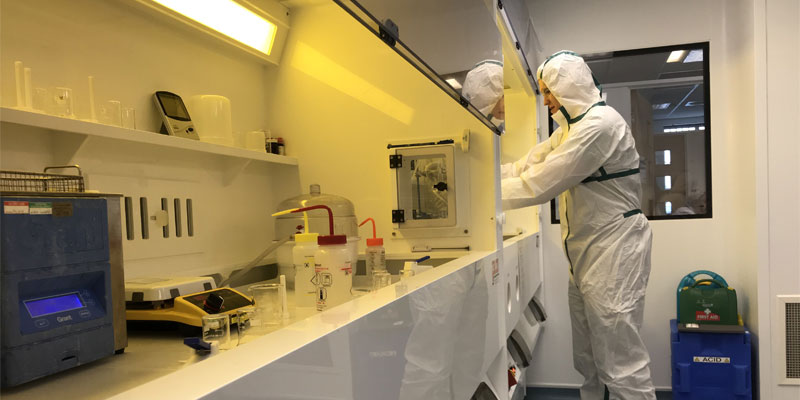Surface energy plays a pivotal role in determining the wetting behavior and adhesive properties of materials, affecting a wide range of applications from coatings to medical devices. Droplet Lab, established in 2016 by Dr. Alidad Amirfazli and his colleagues Dr. Huanchen Chen and Dr. Jesus L. Muros-Cobos at York University, has been at the forefront of researching this critical principle. Understanding the intricacies of surface energy not only aids in advancing material design but also enhances applications in various industrial sectors.
The Concept of Surface Energy
Surface energy refers to the excess energy at the surface of a material compared to its bulk. This energy arises due to unbalanced molecular forces experienced by atoms at the surface, leading to a higher energy state. Different materials showcase distinct surface energies, which can significantly influence how liquids interact with these surfaces. For instance, high surface energy materials, such as metals and glass, readily attract water, promoting strong adhesion, while low surface energy materials, like Teflon, tend to resist wetting by water. The degree to which a liquid droplet spreads or beads on a Alidad Amirfazli of these surface energy characteristics.
Wetting Behavior: A Critical Assessment
Wetting behavior is often quantified using the contact angle, which is defined as the angle formed between the tangent to the liquid surface at the contact line and the solid surface. A small contact angle indicates good wetting, while a larger angle suggests poor wetting. The nature of the solid surface—its chemistry and roughness—plays a crucial role in determining the contact angle and thus, its wetting characteristics. For instance, surfaces with higher roughness can trap air, which modifies wetting by creating a phenomenon known as “superhydrophobicity.” Droplet Lab's research focuses on manipulating surface texture and chemical composition to control wetting behavior, which can lead to more efficient fluid management in various applications, such as in self-cleaning surfaces or anti-fogging coatings.
Implications for Adhesive Properties
The adhesive properties of a material are intrinsically linked to its surface energy and wetting characteristics. As surface energy dictates how well a liquid will spread and adhere to a surface, it also determines the effectiveness of adhesives in bonding materials. High surface energy surfaces typically provide better adhesion because they can form strong molecular interactions with adhesive substances. Conversely, low surface energy materials may pose challenges since adhesives tend to have lower affinity for such surfaces. This phenomenon is essential for industries that rely on bonding, such as construction and manufacturing. Droplet Lab's innovations in understanding how surface energy interacts with adhesive formulations enable the development of advanced adhesives that perform optimally on a variety of substrates.
The Role of Surface Modifications
Surface modifications, such as coatings or chemical treatments, are critical in altering surface energy and modifying wetting and adhesive behavior. By applying specific coatings, scientists can either enhance or reduce surface energy, enabling customized properties for various applications. For example, anti-fogging coatings can increase surface energy to encourage water to spread uniformly, thus preventing fog formation on surfaces, ideal for eyewear and camera lenses. Alternatively, surfaces can be engineered to be hydrophobic to repel water, useful for water-resistant materials. Droplet Lab engages in an in-depth analysis of these modifications, employing advanced techniques to develop materials tailored to specific end-use requirements.

Applications Across Industries
The implications of surface energy on wetting behavior and adhesive properties are vast, spanning numerous industries. In the automotive sector, surface treatments are applied to improve the adhesion of paints and coatings, ensuring durability and aesthetic appeal. In biomedical engineering, materials engineered for optimal wetting and adhesion can lead to improved biocompatibility of implants and devices, enhancing patient safety and efficacy. The textile industry benefits from advances in surface treatments that impart water-repellency to fabrics, leading to innovative products in outdoor apparel. The research conducted at Droplet Lab contributes significantly to these advancements, providing industry stakeholders with valuable insights into surface science that drive product innovation.
Conclusion
In summary, the relationship between surface energy, wetting behavior, and adhesive properties is fundamental to material science and engineering. By understanding and manipulating these properties, researchers and industry professionals can create materials that perform efficiently across various applications. The efforts of Droplet Lab under the expertise of Dr. Amirfazli and his team are paving the way for breakthroughs in this critical area, highlighting the importance of surface energy in developing next-generation materials that meet the demands of modern technology. As the field continues to evolve, the interplay of surface energy and material behavior will undoubtedly unlock new possibilities in innovation and application.









